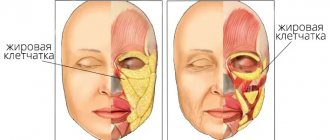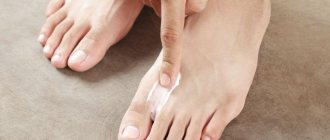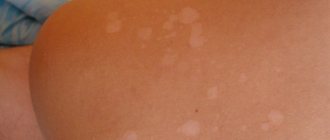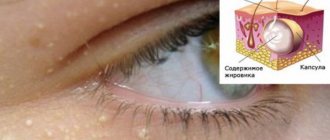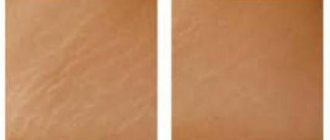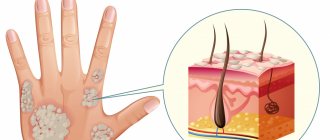White spots on legs and arms: 5 reasons
Often women and others notice the appearance of small white spots on their legs and arms (hypopigmentation). Accordingly, this begs the question: What could it be and what actions should be taken?
This phenomenon is provoked by a number of factors, but it is worth identifying the most common:
- Vitiligo is a skin disease whose etiology is still unknown, and therefore cannot be cured. The only thing that can be done is to improve the condition of the skin as much as possible.
- Pityriasis versicolor is a fungal infection that is present on the dermis of any person and is activated in a favorable environment: prolonged exposure to ultraviolet radiation, increased sweating, and a humid climate. The fungus is treated with special drugs (Clotrimazole, Terbinafine and others).
- Guttate hypomelanosis is another disease, but it is genetic and usually inherited. The exact reasons for its origin have also not been identified, but since it occurs more often after 40 years, it is also associated with aging. Small spots sometimes itch and peel off.
- Lichen alba is a dermatological pathology characterized by changes in skin color. It most often occurs in preschool and teenage children living in regions with a warm and humid climate (you can clearly see this manifestation in the photo below). The skin becomes dry and very flaky. To be sure that it is lichen and to find out how to treat it, you should consult a doctor.
- An adverse reaction to certain pharmaceutical drugs - if they are taken for a long time, skin cells begin to produce pigment (melanin) poorly, resulting in an uneven tan. One such drug is birth control pills.
Discoloration of certain areas of the skin often occurs due to a lack of melanin in the body. Then white spots on the legs and other parts of the body appear after tanning naturally or in a solarium. They do not cause much discomfort.
Cosmetologist Rita Rakus
Representatives of the fair sex with extremely sensitive and pale skin and children under 13 years of age who have not yet fully developed their immune system are more susceptible to this disease.
Women also face a similar problem during pregnancy, after 40 years and during menopause. But this does not mean that others are immune from the appearance of such spots on the body.
Why is reticular varicose veins considered a mild form?
Varicose veins of the lower extremities have a separate type - reticular varicose veins. It is common mainly among women and is considered a mild form of varicose veins because in this case only the thin veins dilate.
Reticular varicose veins are often called cosmetic, since the main symptoms are external manifestations in the form of spider veins on the calves and thighs. Reticular varicose veins occur most often due to wearing high-heeled shoes, severe physical activity and taking hormonal pills.
Despite the fact that reticular varicose veins are mild, they need to be treated to avoid possible complications. Treatment of pathology of this type is carried out with the help of ointments, gels, venotonic nature, drug therapy, laser. Traditional surgical operations performed with a laser, especially a scalpel, are very rarely used.
Other reasons
If we exclude common causes, the appearance of white spots on the skin may be associated with the following situations:
- use of low-quality cosmetics (creams, tonics, lotions);
- after shaving the skin;
- leading a sedentary lifestyle (for example, when you stand on your feet or sit for a long time), which leads to poor circulation in the lower part of the body;
- wearing tight clothing, which causes excessive sweating;
- unbalanced diet, lacking vitamins and microelements.
Any of these factors can lead to a decrease in melanin synthesis, which inevitably causes hypopigmentation.
Do not immediately panic when you discover white spots on your legs and arms. The first thing you need to do is visit a dermatologist to rule out any serious diseases after the examination.
Only after finding out the cause can you begin treatment, which will be prescribed by a specialist.
Separately, it is worth highlighting information about the appearance of white spots on the legs and other parts of the body in children. In most cases, this is caused by the following diseases:
- Hypomelanosis . It makes itself felt in the first years of life after infectious diseases.
- Tumorous sclerosis . It is a signal of more serious problems in the body (epilepsy, mental retardation, damage to some internal organs).
What are the symptoms of pelvic varicose veins?
If venous blood stagnates in the pelvic area, this can lead to the appearance of varicose veins in this area. It can stagnate due to sedentary work, mechanical compression of the veins by the enlarged uterus, and uncontrolled use of hormonal drugs. The cause of the appearance of dilated veins in the pelvic area can also be poor nutrition, constipation, hernias, problems in the genitourinary area, pathologies in the pelvic organs, nervous disorders and insomnia.
Most often the disease occurs in women. Pregnant women and menopausal women are at risk. The pathology manifests itself as pain in the perineal area, which becomes more intense after hypothermia or a long stay in a sitting position. Also, venous tubercles form in the perineal area, the process of urination becomes painful, and unpleasant sensations are observed during and after sexual intercourse.
All these signs require immediate contact with a specialist, because without adequate therapy, varicose veins of the small pelvis are aggravated by complications: thrombosis, thrombophlebitis, trophic ulcers. Pathology is diagnosed mainly by ultrasound examination, if there are no external signs yet.
Is it possible to cure white pigmentation on the skin and how?
If you notice the appearance of white spots on your legs after sunbathing, then you cannot diagnose yourself and start getting rid of them in all possible ways.
What it really is and how to treat it should be clarified exclusively by a dermatologist after an examination. Subsequent therapy will depend on the diagnosis.
Drug intervention
When a certain skin disease is diagnosed, the doctor usually prescribes the following measures:
- using ointments containing melatonin and taking it in tablet form;
- ultraviolet irradiation;
- laser stain leveling;
- hormone therapy;
- restoring the functioning of the endocrine system by taking appropriate medications.
If hypomelanosis is detected in children (very often seen in photos on the Internet), it often causes the appearance of white spots on the skin, then doctors usually prescribe drugs that inhibit the development of this disease. Epidermis peeling sessions also help.
Cosmetologist Christina Brecht
If the skin is damaged by a fungus, you can treat it yourself using antifungal ointments and sprays. They are sold at the pharmacy. Clotrimazole and Lamikon are considered the most effective.
Cosmetology procedures (3 options)
White spotting on the legs and arms can be dealt with by resorting to certain cosmetic procedures. But this is provided that this phenomenon is not caused by any skin diseases.
After diagnosis, a professional cosmetologist can offer the following methods to solve the problem:
- Superficial peeling involves the use of fruit acids, due to which dead cells are carefully removed from the epidermis. This method is effective for relatively fresh stains.
- Deep peeling – a stronger acid is used for this procedure, so it should not be done by people with particularly sensitive skin. After it, minor damage is possible, which will heal for about a week.
- Ozone therapy is used when more thorough cleansing of the skin from pollution and pathogenic microorganisms is required.
It is better not to carry out the listed procedures in the summer, since after them sun exposure to the dermis is undesirable.
Folk remedies
It is not possible to completely cure white spots on the legs and arms using folk remedies, but it is possible to make them less noticeable. Here are some productive recipes collected from reviews and forums:
- Squeeze the juice from one lemon and combine it with kombucha tincture (1:2). Soak a cotton swab in the resulting solution and treat white spots on the skin. Do this every 3-4 hours until the pigmentation becomes less noticeable.
- Another effective method: separate the white from a chicken egg, beat it with a mixer and gradually add lemon juice (2 tablespoons) to it. Then this mixture is heated until it thickens, remembering to stir constantly. After this, turn it off and add lavender oil. After cooling, the product is applied to problem areas. Wash off when it hardens.
- Mix natural honey, rice flour, sandalwood powder and turmeric (all components are taken in equal proportions). The result should be a composition of homogeneous consistency, which is distributed evenly over the stains.
- Grind sesame seeds in a coffee grinder and take 1 tsp of them orally. twice a day. After 2 weeks, the pigmentation will not be so pronounced.
If white spots appear after sunbathing, cosmetologists recommend wiping the skin with fresh cabbage leaves or ginger.
Proper care
Facial care, where there is also a high risk of white spots after tanning, involves using masks and creams with a whitening effect.
A few very effective recipes:
- Combine freshly squeezed lemon juice and hydrogen peroxide, taken in equal parts. Then a piece of gauze or cotton cloth is soaked in the solution and applied to the face. After a quarter of an hour, it is removed and washed with lukewarm water. This compress is done 2 times a week.
- Twist oatmeal flakes in a coffee grinder or blender and mix with ground coffee (take 1 tbsp of each ingredient). Add 10 ml of lemon or cranberry juice. This mixture is applied to problem areas and washed off with water after 10 minutes. After this, lubricate the skin with nourishing cream.
You can get rid of white pigment spots using pharmaceutical products. For example, the drug Achromin has a healing effect and quickly returns the skin to a healthy appearance. They treat stains every time they go outside and before going to bed.
What are internal varicose veins
With internal varicose veins, it is not the superficial, but the deep veins that are affected. The usual external signs in the form of bulging veins and vascular networks are often absent. The pathology is manifested by soreness of the lower extremities, which is often mistaken for banal fatigue. Elderly people are susceptible to internal varicose veins, whose deep veins transform due to age-related changes, become less flexible and elastic, and the valve system suffers from wear and tear. If the pathology is not treated, ulcers form on the lower extremities, which are difficult to heal.
Tanning rules (recommendations)
What to do if, after a thorough medical examination, no dermatological problems are identified, but the tan still does not lie evenly.
It is recommended to change your approach to skin care and tanning sessions. Here are some useful tips:
- Avoid low-quality and cheap cosmetics. It is better to buy one cream or lotion, but such that it fully provides the dermis with all the necessary components. It is especially important that the composition contains vitamins (A, E) and minerals, as well as natural oils.
- Drink plenty of water. Dehydration negatively affects the skin, increasing its sensitivity to UV radiation. It is advisable to exclude pickles and smoked foods from your daily diet, which retain water in the body.
- Clean your skin regularly. Dead skin cells, clogged pores, sebum and other impurities cause uneven tanning. Therefore, take wet wipes to the beach and exfoliate more often.
- Follow basic hygiene rules. In the solarium, make sure that the cabin is pre-treated with disinfectants. During the session, use personal household items: mat, footprints, glasses. This way you can protect yourself from contracting any infection.
- Use special SPF creams with a protection index of more than 30. It is recommended to renew the cream layer several times a day and each time after leaving the water. Use such creams in urban areas with the onset of summer.
- Stick to a proper diet. If the skin is healthy, then the tan will lie evenly on it and the risk of pigmentation is minimal.
Do not sunbathe for more than 2 hours, especially during the sun's peak activity (from 11 a.m. to 4 p.m.). If the spots do not disappear, but, on the contrary, their number and size increase, then completely avoid sunbathing and visiting the solarium.
Dermatological surgeon Karin Litani
Team of Doctors
Internal varicose veins are very difficult to recognize in the initial stages. Therefore, everyone who has a genetic predisposition to this disease is recommended to undergo a preventive ultrasound at least once a year. Since the deep veins are surrounded on all sides by muscles, it is impossible to detect their deformation during visual inspection
What does varicose veins of the foot look like?
At the very beginning of the development of pathology, one feels heaviness and fatigue in the legs by the end of the day. Next, aching pain may appear, a sensation as if the leg is bursting, and the foot swells. All these symptoms may go away on their own after rest. But you shouldn’t put off going to the doctor. If varicose veins of the feet are not treated at the initial stage, the disease will begin to progress. First, spider veins and spider veins will appear, then varicose veins will also affect large veins. At this stage, the pain becomes constant, the legs begin to swell more, and muscle spasms appear.

